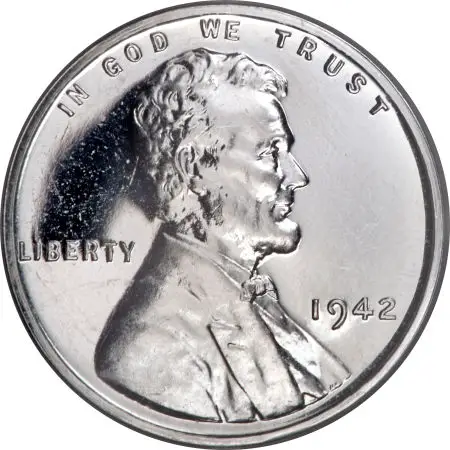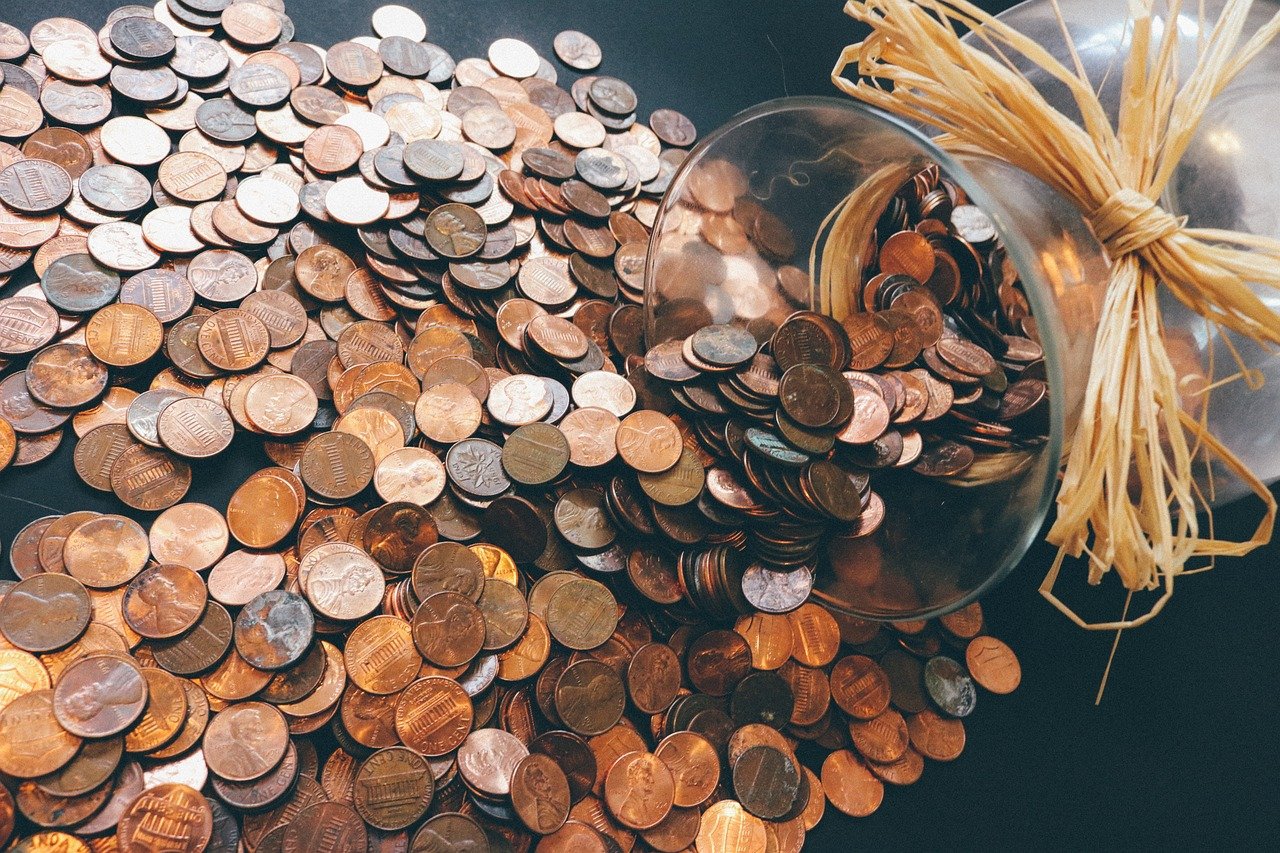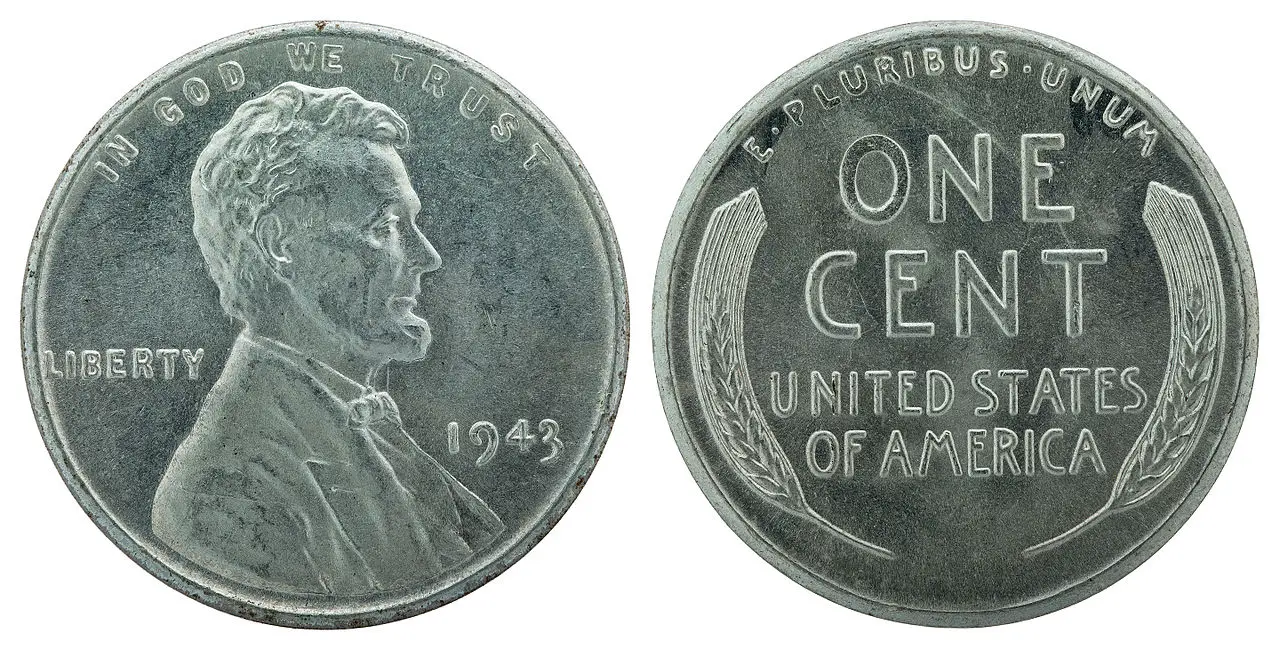The 1942 Lincoln Wheat Penny is a remarkable piece of American history. With its distinct design and variations, it has become a sought-after item for collectors and historians alike. This article delves into the fascinating world of this unique coin, exploring its value, grading, historical context, and more. Whether you’re a seasoned collector or new to numismatics, the 1942 Lincoln Wheat Penny offers a captivating glimpse into a bygone era.
Table of Contents
A Historical Experiment: The 1942 Experimental Cents

In the midst of World War II, the demand for copper soared due to its extensive use in ammunition and other military equipment. This led the United States Mint to explore alternative compositions for the penny, a coin traditionally made of copper.
The Need for Change
The urgency of the war effort necessitated a reduction or complete elimination of copper in cent production. The Mint embarked on a series of experiments, striking pattern coins in various metals and even non-metal compositions.
The Designs
Two main designs were used in these experimental cents:
- Colombian Patterns: Utilizing the obverse design of the Colombian two centavo coin, these patterns were struck in various compositions.
- Lincoln Patterns: Modified rim Lincoln cent dies were used to create patterns in different materials.
The Outcome
The experimentation led to selecting zinc-coated steel as the composition for the 1943 cent. This choice significantly departed from traditional copper cents and reflected the wartime exigencies.
Overview of the 1942 Lincoln Wheat Penny
Design and Features
The 1942 Lincoln Wheat Penny features the profile of former President Abraham Lincoln on the obverse side, with inscriptions “Liberty” and the year of minting. The reverse side showcases two single stalks of wheat, earning it the nickname “Wheat Penny.” This design has become iconic and represents a significant period in American coinage.
Mint Marks and Rarity Of The 1942 Lincoln Wheat Penny
There are three main mint marks that represent the 1942 Lincoln Wheat Penny:
- Philadelphia Mint (No Mark): This is the most common mint mark and is abundant and widely available.
- Denver Mint (D): This mint mark is also relatively common, but is sought after in minimal wear.
- San Francisco Mint (S): This mint mark is the rarest and has significant value in above-average condition.
The 1942 Lincoln Wheat Penny is a popular coin among collectors due to its historical significance and its relatively low mintage. The coin was produced during World War II, when copper was in high demand for the war effort. As a result, the 1942 Lincoln Wheat Penny was made from zinc-plated steel instead of copper. This change in composition made the coin lighter and less valuable than previous issues. However, the 1942 Lincoln Wheat Penny is still a desirable coin for collectors, and its value has increased in recent years.
Value Determination
Understanding the value of the 1942 Lincoln Wheat Penny requires considering several factors:
- Mint Mark Recognition: Identifying the mint mark is crucial. (CoinStudy).The mint mark is a small letter that appears on the reverse of the coin, below the wheat stalks. There are two mint marks for the 1942 Lincoln Wheat Penny: D and S. The D mint mark indicates that the coin was minted in Denver, while the S mint mark indicates that the coin was minted in San Francisco.If the penny does not have a mint mark it was stamped in Philadelphia.
- Condition: Grading plays a significant role in determining value. The condition of a coin is determined by its grade, which is a numerical rating that indicates the coin’s overall condition. Coins are graded on a scale of 1 to 70, with 1 being the lowest grade and 70 being the highest grade.
- Market Trends: Recent auction prices and market demand influence value. The value of a coin can fluctuate based on recent auction prices and market demand. For example, if a coin is rare and in high demand, its value will likely be higher than a coin that is common and not in high demand.
- Rarity: The scarcity of specific mint marks or conditions can greatly affect the coin’s worth. Some mint marks and conditions of the 1942 Lincoln Wheat Penny are more rare than others. For example, the 1942-D Wheat Penny is considered more abundant than the 1942-S Wheat Penny. Additionally, coins in uncirculated condition are more valuable than coins in circulated condition.
Overall, the value of a 1942 Lincoln Wheat Penny is determined by a variety of factors, including the mint mark, condition, market trends, and rarity.
Video: Hidden Treasures: Exploring the Fascinating History, Value, and Rarity of the 1942 Wheat Penny
Grading the 1942 Lincoln Wheat Penny
Grading is essential in assessing the coin’s value:
- Uncirculated Grade: No wear, fine grain texture of luster remaining.
- Extremely Fine Grade: Small amount of wear, slight flattening.
- Fine Grade: Major features flattened, minor details missing.
- Good Grade: Large flat areas, major contours flattened.
For a detailed guide on grading, visit Grading Lincoln Wheat Pennies. Understanding grading is vital for both buyers and sellers to ensure fair transactions.
Special Qualities and Collecting Approaches
Different collecting approaches impact value:
- Advanced Collectors: Seek rare and high-grade coins.
- Affordable Approach Collectors: Focus on affordable, older wheat cents.
- Accumulators: Collect quantities of pennies, often for investment purposes.
Special situations, such as the scarcity of lightly worn pennies from 1934 to 1943, can also enhance value. Recognizing these nuances can lead to more informed collecting decisions.
How to Buy and Sell Lincoln Wheat Pennies
Buying and selling the 1942 Lincoln Wheat Penny requires careful consideration:
- Buying Tips: Research, authenticate, and consult reputable dealers.
- Selling Guide: Maximize value through proper grading and marketing (Selling Wheat Pennies).
- Avoiding Scams: Beware of counterfeit coins and untrustworthy sellers.
Historical Context and Legacy
The 1942 Lincoln Wheat Penny reflects a significant period in American history, including the impact of World War II on coin production. For more insights into wartime coinage, explore the 1943 steel wheat penny. Understanding the historical context adds depth to appreciating this coin and its place in American culture.
Additional Resources and References
- US Mint: 1943 US Mint Annual Report
- Coin Values: CoinStudy Articles
- Lincoln Penny Value Chart: Extensive value chart for Lincoln Wheat cents.
- Local Coin Shops: Visit local coin shops for hands-on examination and expert advice.The US Mint is the government agency that produces coins for the United States. The 1943 US Mint Annual Report is a document that provides information about the coins that the Mint produced in that year. Coin Values is a website that provides information about the value of coins. The Lincoln Penny Value Chart is a chart that provides information about the value of Lincoln Wheat cents. Local Coin Shops are businesses that sell coins. If you are interested in learning more about your coins’ value, you may visit a local coin shop for hands-on examination and expert advice.
In addition to the information provided above, you may also be interested in the following:
- The US Mint also produces commemorative coins, which are coins that are produced to commemorate a special event or occasion.
- The value of a coin can be affected by a number of factors, including its condition, rarity, and demand.
- Local coin shops can be a great resource for information about coins, as well as for buying and selling coins.
Final Thoughts About the 1942 Wheat Penny
The 1942 Lincoln Wheat Penny offers a rich tapestry of history, art, and economics. Its variations, grading, and special qualities make it an exciting area for collectors and enthusiasts. Whether you’re a seasoned numismatist or a curious beginner, the world of the 1942 Lincoln Wheat Penny awaits your exploration. Its legacy continues to inspire new generations of collectors, preserving a piece of American heritage.
Help Us Improve
If you found this article informative, please share it with fellow collectors and subscribe for more insights into the world of numismatics. Your engagement helps us continue to provide valuable content for the numismatic community.




